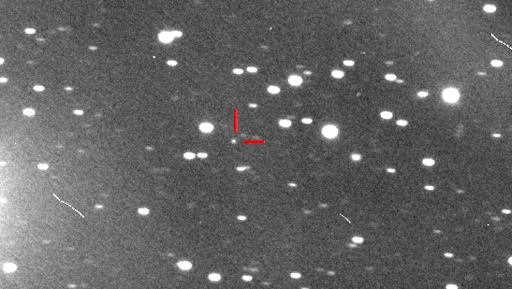Love~, Light~, Peace~
Sineh~
This news has been brought to my attention:
Nazi-Acquired Buddha Statue Came From Space
Nazi-Acquired Buddha Statue Came From Space

A Buddha statue dating back to the 8th to 10th centuries is carved from a rare iron meteorite.
CREDIT: Elmar Buchner
CREDIT: Elmar Buchner
It sounds like a mash-up of Indiana Jones' plots, but German researchers say a heavy Buddha statue brought to Europe by the Nazis was carved from a meteorite that likely fell 10,000 years ago along the Siberia-Mongolia border.
This space Buddha, also known as "iron man" to the researchers, is of unknown age, though the best estimates date the statue to sometime between the eighth and 10th centuries. The carving depicts a man, probably a Buddhist god, perched with his legs tucked in, holding something in his left hand. On his chest is a Buddhist swastika, a symbol of luck that was later co-opted by the Nazi party of Germany.
"One can speculate whether the swastika symbol on the statue was a potential motivation to displace the 'iron man' meteorite artifact to Germany," the researchers wrote online Sept. 14 in the journal Meteoritics & Planetary Science.
~~~~~~~
ALSO:
BIG SUN-DIVING COMET DISCOVERED: Astronomy forums are buzzing with speculation about newly-discovered Comet C/2012 S1 (ISON). Currently located beyond the orbit of Jupiter, Comet ISON is heading for a very close encounter with the sun next year. In Nov. 2013, it will pass less than 0.012 AU (1.8 million km) from the solar surface. The fierce heating it experiences then could turn the comet into a bright naked-eye object. (continued below)
Much about this comet--and its ultimate fate--remains unknown. "At this stage we're just throwing darts at the board," says Karl Battams of the NASA-supported Sungrazer Comet Project, who lays out two possibilities:
"In the best case, the comet is big, bright, and skirts the sun next November. It would be extremely bright -- negative magnitudes maybe -- and naked-eye visible for observers in the Northern Hemisphere for at least a couple of months."
"Alternately, comets can and often do fizzle out! Comet Elenin springs to mind as a recent example, but there are more famous examples of comets that got the astronomy community seriously worked up, only to fizzle. This is quite possibly a 'new' comet coming in from the Oort cloud, meaning this could be its first-ever encounter with the Sun. If so, with all those icy volatiles intact and never having been truly stressed (thermally and gravitationally), the comet could well disrupt and dissipate weeks or months before reaching the sun."
"Either of the above scenarios is possible, as is anything in between," Battams says. "There's no doubt that Comet ISON will be closely watched. Because the comet is so far away, however, our knowledge probably won't develop much for at least a few more months."
Meanwhile, noted comet researcher John Bortle has pointed out a curious similarity between the orbit of Comet ISON and that of the Great Comet of 1680. "Purely as speculation," he says, "perhaps the two bodies could have been one a few revolutions ago."
Stay tuned for updates.
Source: Spaceweather.com

No comments:
Post a Comment